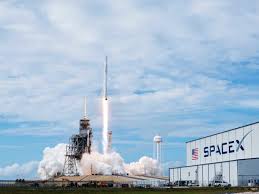
Breaking News
 Trump pardons Mets legend, 'Celebrity Apprentice' alum Darryl Strawberry over tax evasion co
Trump pardons Mets legend, 'Celebrity Apprentice' alum Darryl Strawberry over tax evasion co
 You WON'T BELIEVE How Much Money We're REALLY Sending To Israel!
You WON'T BELIEVE How Much Money We're REALLY Sending To Israel!
 China CANCELS U.S. Soybean Order?! Joel Salatin
China CANCELS U.S. Soybean Order?! Joel Salatin
 Ep 38 Jonathan Haidt: on The Anxious Generation: Childhood in Social Media Age & Fragile College ...
Ep 38 Jonathan Haidt: on The Anxious Generation: Childhood in Social Media Age & Fragile College ...
Top Tech News
 HUGE 32kWh LiFePO4 DIY Battery w/ 628Ah Cells! 90 Minute Build
HUGE 32kWh LiFePO4 DIY Battery w/ 628Ah Cells! 90 Minute Build
 What Has Bitcoin Become 17 Years After Satoshi Nakamoto Published The Whitepaper?
What Has Bitcoin Become 17 Years After Satoshi Nakamoto Published The Whitepaper?
 Japan just injected artificial blood into a human. No blood type needed. No refrigeration.
Japan just injected artificial blood into a human. No blood type needed. No refrigeration.
 The 6 Best LLM Tools To Run Models Locally
The 6 Best LLM Tools To Run Models Locally
 Testing My First Sodium-Ion Solar Battery
Testing My First Sodium-Ion Solar Battery
 A man once paralyzed from the waist down now stands on his own, not with machines or wires,...
A man once paralyzed from the waist down now stands on his own, not with machines or wires,...
 Review: Thumb-sized thermal camera turns your phone into a smart tool
Review: Thumb-sized thermal camera turns your phone into a smart tool
 Army To Bring Nuclear Microreactors To Its Bases By 2028
Army To Bring Nuclear Microreactors To Its Bases By 2028
 Nissan Says It's On Track For Solid-State Batteries That Double EV Range By 2028
Nissan Says It's On Track For Solid-State Batteries That Double EV Range By 2028
SpaceX Launches Its 12th Resupply Mission to the ISS

On Monday, SpaceX is poised to end a 40-day launch drought in the United States with a cargo run to the International Space Station. The commercial space outfit will fire off its 12th resupply service mission for NASA from Kennedy Space Center using a fresh Falcon 9 rocket. On top, a Dragon capsule with over 6,400 pounds of supplies—a typical haul could include a variety of toilet paper (the Russians prefer a rougher texture while the Americans opt for a softer touch), fresh socks, and most importantly, tortillas. Mexican food has been a staple in low-Earth orbit since the 80s, so regular reups of Picante sauce are a must.
Last week, SpaceX performed a hold-down test fire of the CRS-12 Falcon 9 rocket and is targeting a 12:31 pm Eastern liftoff on Monday. Minutes after the booster delivers SpaceX's Dragon to a preliminary orbit, it will attempt a return flight for touchdown at Landing Zone 1 on Florida's space coast.Along with the groceries, ISS cargo drops have included hardware like an espresso machine, a handy 3-D printer, and even a relatively huge inflatable module currently being accessed and tested by the crew. In addition to the essentials, Dragon will be carrying enough resources to aid in over 250 research projects. This includes a NASA-funded experiment to study cosmic rays dubbed CREAM (for Cosmic Ray Energetics and Mass), mice to study the effects of long-duration spaceflight on vision and joints, and seeds to continue growing plants in microgravity. The agency also partnered with Hewlett Packard to send up a supercomputer to determine if off-the-shelf computer hardware can properly operate in space.

 Carbon based computers that run on iron
Carbon based computers that run on iron

